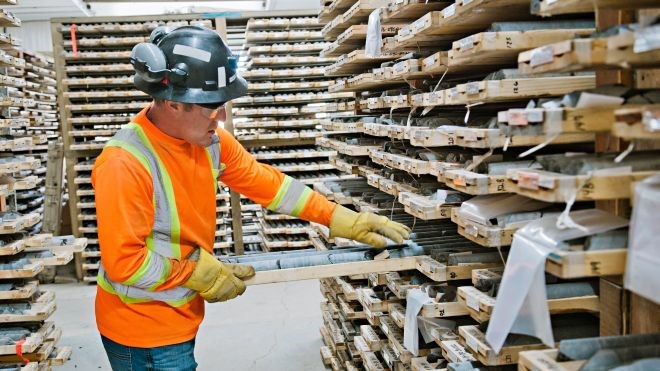The year 2016 was a transformational one for Kirkland Lake Gold.
From a junior gold company in northeastern Ontario, Kirkland Lake Gold has grown into a mid-tier gold producer with two flagship district-scale operations on separate continents with four operating mines.
Kirkland Lake Gold finished the year with a strong cash balance sheet of US $235 million, the majority of it generated from its operations.
After finalizing the acquisition of St. Andrew Goldfields in January and striking a business combination with Newmarket Gold for its Australian gold properties in November, the Toronto-headquartered mid-tier miner attained record gold production of 314,495 ounces in its year-end results.
This year, the guidance for its global assets is in the 530,000 to 570,000-ounce range.
The company is significantly investing in operations to the tune of $180 million in growth and sustaining capital, with an additional $45 million to $55 million earmarked for exploration across all of its global properties.
Kirkland Lake Gold has operating mines and exploration properties in the historic Kirkland Lake gold camp, including its cornerstone Macassa Mine – one of the highest-grade gold mines in the world – and the Holt Mine Complex which includes the Holt and Taylor Mines.
The business combination with Newmarket Gold, a Canadian-listed gold producer, brought to the table three underground mines in Australia, led by its flagship Fosterville Mine, along with a stable of exploration opportunities in that country.
Macassa and Fosterville, the latter located in the Australian state of Victoria, account for more than 70 per cent of the company’s total gold production in 2017.
The Newmarket acquisition afforded an opportunity to build ounces in the world’s second largest gold production region.
Though located in a well-known mining jurisdiction in the state of Victoria, the Kirkland Lake Gold team felt Fosterville was an undervalued property with great upside.
The mine sits on a massive 500-square-kilometre land package and located near some past high-grade multi-million-ounce producers from decades ago.
The previous operators had been successful in building resources and reserves there, but it wasn't until late 2015 when the mine reached a major inflection point upon discovery of the Eagle Zone, containing high-grade visible gold. The discovery resulted in significant positive impacts on reserve grade, production and costs, as well as the potential for a mill gravity circuit to achieve improved recoveries.
Over the last 12 months, underground reserves at Fosterville have increased more than 100 per cent.
Recent drill results have yielded very high-grade visible gold from a couple of newly discovered zones with a larger higher grade reserve.
Mining in this high-grade, Lower Phoenix area has largely contributed to the recent improved operating results, which promoted an upwards revision to annual production. For 2017, Fosterville is targetting to produce 200,000 to 225,000 ounce sof gold at a low operating cost of US$310 to $330 per ounce gold.
In northeastern Ontario, Kirkland Lake Gold has a very aggressive exploration schedule for this year to increase gold ounces around its current operations.
The company believes the best place to find extensions to mineralization to increase gold production is near existing infrastructure.
Five surface drills are at Macassa with three rigs underground to test the South Mine Complex’s West and East Limb, and down-plunge.
The 2017 production guidance for Macassa is set between 190,000 and 195,000 ounces, a significant increase from previous years, with approximately 80 per cent of total production coming from the South Mine complex.
Past production at Macassa was typically coming from mining high-grade veins within the Main Break and 04 Break, and to the north of it.
In the early 2000s, a discovery was made south of the Main Break that’s now termed the South Mine Complex. That discovery has grown to two million ounces of reserves, and more than two million ounces of additional resources in various categories.
The company plans to continue exploring along that Main Break to the south and along the Amalgamated Break to the north. The future of the Macassa is within the South Mine Complex and along that corridor with tremendous potential to find more mineralization.
Through the merger agreement with St. Andrew Goldfields in late 2015, the company foresaw the opportunity for a fantastic land package along the prolific mineral-rich Porcupine-Destor fault district.
The company sizes up the Taylor Mine as being in its relative infancy with considerable potential down-plunge from its 104 Zone and mineralization found to the east and west of the current ramp.
Last year, Taylor produced 42,000 ounces, but the company believes it has the potential to reach between the 55,000 and 60,000 ounce mark this year, and beyond.
The company believes the higher production target will be achieved through the ramp-up of operations, combined with productivity and efficiency improvements.
Despite both Fosterville and Macassa Mines being long-time producers, there is exceptional exploration upside and both are turning into extremely high-grade producers. During 2017, the company is forecasting to spend US$45 to $55 million in exploration to find additional ore to fill the mills, lower costs, and increase production. Organic growth is a key focus of the company, especially since all the mills, between Australia and Canada, have been excess capacity.
Though action on the acquisitions side is relatively quiet, the company is always on the lookout for new opportunities.
In April, Kirkland Lake Gold invested $7.2 million into a junior gold company, Metanor Resources, and its low-cost Bachelor Mine and Barry deposit in northwestern Québec, taking a 19 per cent stake on a partially diluted basis.




